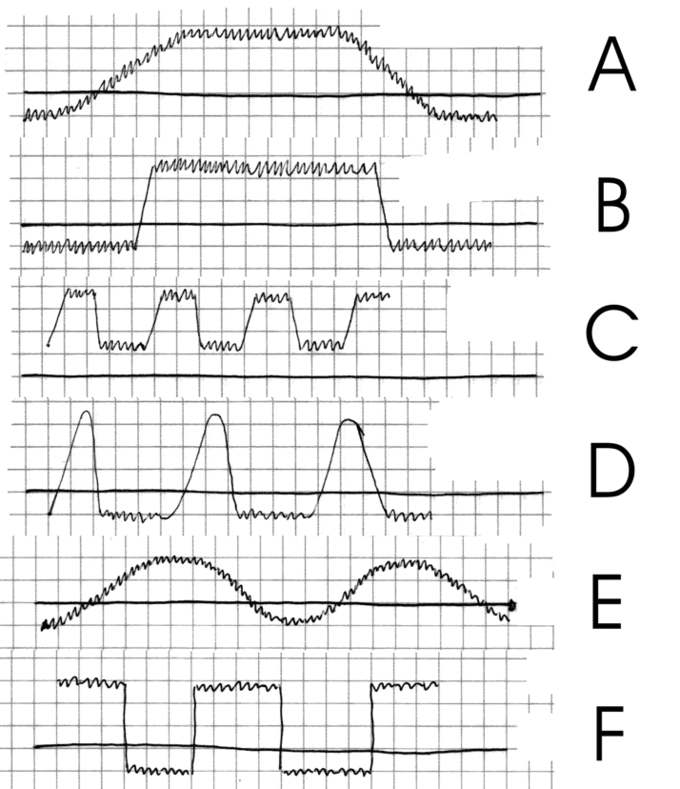Fever (also known as pyrexia) is a physiological process of the innate immune response against many infections and diseases, characterized by an elevation of temperature above the normal range of 36.5–37.5 °C (98–100 °F) due to an increase in the body temperature regulatory set-point. Although the person's temperature increases, there is often a feeling of cold. Once the new temperature is reached, there is a feeling of warmth. A fever can be caused by many conditions ranging from benign to potentially serious. Fevers are helpful in fighting infections, but can also cause damage in the body.

Performance of the Various Types of Fever
Performance of the various types of fever: a) Fever continues b) Fever continues to abrupt onset and remission c) Fever remittent d) Intermittent fever e) Undulant fever f) Relapsing fever
Fever Pathways
Temperature is ultimately regulated in the hypothalamus. The primary fever mediator in the human body is prostaglandin E2 (PGE2), which acts on the hypothalamus to raise the temperature set point. PGE2 release comes from the arachidonic acid pathway, which also produces inflammatory mediators such as thromboxane and leukotriene. This pathway is mediated by the enzymes phospholipase A2 (PLA2), cyclooxygenase-2 (COX-2), and prostaglandin E2 synthase. These enzymes ultimately mediate the synthesis and release of PGE2. Therefore, COX-2 inhibitors such as aspirin are commonly used to reduce fever, although treatments designed to inhibit pyrogens are also effective.
The hypothalamus is the thermostat of the body, in that it alters the temperature set point during temperature feedback and fevers. During a fever, the set point is raised, which causes the body to increase its temperature through both actively generating and retaining heat (vasoconstriction). If these measures are insufficient to make the blood temperature in the brain match the new setting in the hypothalamus, then shivering begins so those muscle movements produce more heat. When the fever stops (when PGE2 release ends), the temperature set point is lowered to normal, and the reverse of these processes (vasodilation, end of shivering, and nonshivering heat production) as well as sweating are used to cool the body to the new, lower setting.
Pyrogens
A pyrogen is a substance that induces fever and can be either internal (endogenous) or external (exogenous) to the body. Pyrogenicity can vary: in extreme examples, bacterial pyrogens known as superantigens can cause rapid and dangerous fevers. Depyrogenation may be achieved through filtration, distillation, chromatography, or inactivation.
Exogenous factors s lipopolysaccharide toxin (from gram negative bacteria) which can activate a number of innate immune activation pathways. These pathways induce the expression of endogenous pyrogens, including a variety of cytokines such as IL1α, IL1β, IL6, TNFα, TNFβ, IFNα, INFβ, and INFγ. For example, if an NK cell detects lipopolysaccharide from a pathogen, it will release TNFα, which will travel through the bloodstream to induce a number of long-lasting inflammatory changes including fever. When TNFα or any of these cytokine factors bind to cells in phospolipids in the brain, the arachidonic acid pathway is activated and PGE2 released to act on the hypothalamus and cause the fever response.
Problems with Fever
Fever is normally a beneficial immune process since increased body temperature can kill off bacteria and viruses and denature bacterial enzymes. But when the body temperature climbs too high, fever is often more harmful than helpful. High fevers also denature the body's own proteins, which can alter normal cell metabolism, leading to cell injury and death. Persistent high body temperature can also trigger apoptosis. Treatments for severe fevers include antipyrogens and aspirin, which also helps to stop blood clots that may coincide with severe fever.
High fevers (more than 104 degrees Fahrenheit) are a symptom of severe infections. While fevers typically aren't the direct cause of death in these cases, they do tend to worsen the prognosis. For example, septic shock is a severe bacterial infection in which bacterial toxins stimulate pyrogen and inflammatory mediator activity causes high fever. The fever makes it harder for the body to stop the systemic organ failure that occurs from the compensatory mechanisms in septic shock. Organs fail as blood is pulled away from them to fight the infection (compensatory mechanisms), the damage caused by the fever results in even more compensatory mechanism activity. While septic shock is one of the worst possible examples of fever, it illustrates an important concept in pathophysiology: that normal immune functions are as easily able to hurt us as help us..